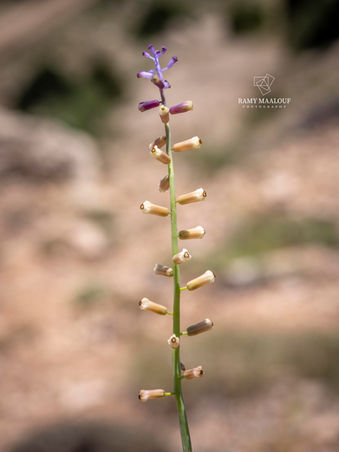Family |
Asparagaceae
Muscari tenuiflorum
Tausch
Muscari tenuiflorum Tausch
= Bellevalia tenuiflora (Tausch) Nyman; Leopoldia tenuiflora (Tausch) Heldr.; M. alpinum Gay ex Baker; M. buschiricum Parsa; M. iranicum Parsa; M. tubiflorum Steven; M. wallii Rech.f.
(Flora 24: 324, 1841; Biological flora of Central Europe: Herrmann, Weiss & Durka 2006, Flora 201: 81–101)
• Life-form & habit: Bulbous perennial geophyte, 15–40 cm tall; bulb ovoid, 2.5–4.5 cm, covered with grey-brown papery tunics; adventitious roots numerous, up to 8 cm, branched.
• Leaves: 2–6, linear to linear-lanceolate, 10–25 × 0.2–0.8 cm, canaliculate, glabrous, green; basal cataphylls persistent.
• Inflorescence & flowers: Racemes 5–15 cm, with 20–50 flowers. Fertile flowers tubular-campanulate, 4–6 mm, dull greenish to brownish-violet with paler margin, constricted at the mouth, pedicels patent to reflexed. Sterile apical flowers brighter violet-blue, smaller, often persistent.
• Fruit: Capsule ovoid-trigonous; seeds globose, black, smooth.
• Phenology: Flowers March–May; fruits ripen early summer.
• Habitat & elevation: Steppe grasslands, open rocky slopes, shrub margins, and light woodlands; prefers calcareous soils, moist in autumn–spring and dry in summer; 200–1,600 m.
• Native range: Albania, Austria, Bulgaria, Czechia–Slovakia, Germany, Greece, Hungary, Iran, Iraq, Lebanon–Syria, North Caucasus, NW. Balkan Peninsula, Palestine, Romania, Saudi Arabia, Transcaucasus, Türkiye, Türkiye-in-Europe, Ukraine. (KEW)

